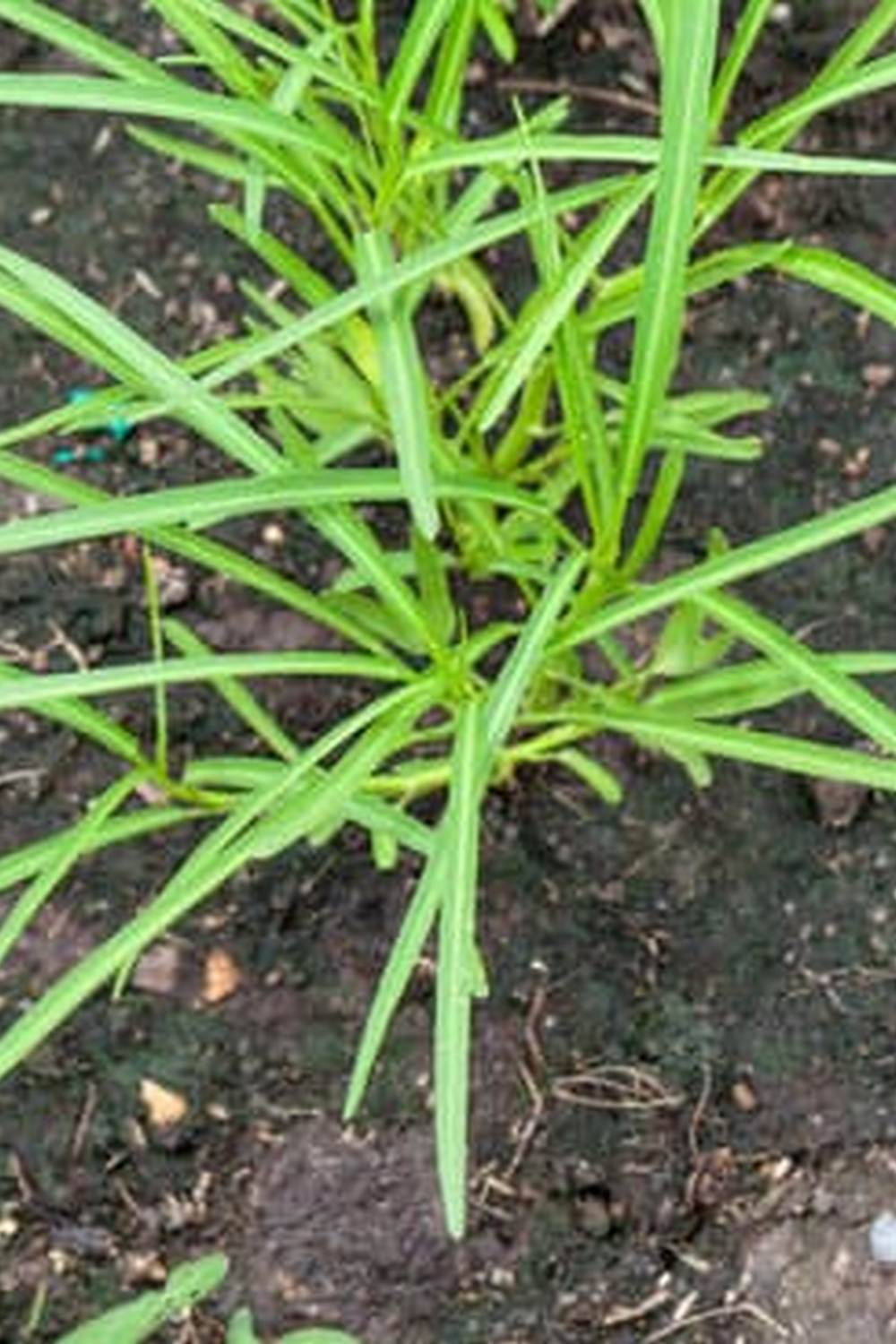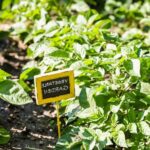Are you interested in starting a vegetable garden in the Philippines? Vegetable gardening in the Philippines is a popular and rewarding activity for many individuals and families.
With the country’s rich and diverse agricultural landscape, there are numerous opportunities to grow a variety of vegetables right in your own backyard or small space. Whether you’re a beginner or experienced gardener, this article will provide you with essential information on how to start and maintain a successful vegetable garden in the Philippines.
The Philippines’ tropical climate makes it an ideal location for growing vegetables year-round. The warm weather and abundant sunshine create favorable conditions for various types of produce to thrive.
In addition, the fertile soil in many parts of the country offers excellent potential for cultivating a wide range of vegetables. These factors make vegetable gardening an accessible and sustainable practice for individuals looking to contribute to their household’s food supply or simply enjoy the process of growing their own fresh produce.
In this article, we will discuss the best vegetables to grow in the Philippines, climate and soil considerations, tips for successful vegetable gardening, container gardening options for limited spaces, common pests and diseases to watch out for, seasonal planting guides, and the economic and health benefits of engaging in vegetable gardening. By embracing this sustainable practice, individuals can not only enjoy the fruits of their labor but also contribute to a healthier lifestyle and environment.
Whether you have a spacious backyard or limited space in an urban setting, there are options available for anyone interested in starting their own vegetable garden in the Philippines.
Best Vegetables to Grow in the Philippines
When it comes to vegetable gardening in the Philippines, there are certain vegetables that thrive exceptionally well in the country’s climate and soil conditions. Whether you are an experienced gardener or just starting out, choosing the right vegetables to grow is essential for a successful harvest. Here are some of the best vegetables to consider for your vegetable gardening efforts in the Philippines.
Leafy Greens
Leafy greens such as kangkong (water spinach), pechay (Chinese cabbage), and alugbati (Malabar spinach) are excellent choices for vegetable gardening in the Philippines. These vegetables are not only easy to grow but also highly nutritious, making them popular options for home gardens and small-scale farming.
Root Crops
Root crops like sweet potatoes, carrots, and radishes are well-suited for the Philippine climate and soil. These vegetables can be grown throughout the year in different regions of the Philippines, providing a reliable source of carbohydrates and nutrients for your family.
Tomatoes and Eggplants
Tomatoes and eggplants are staple ingredients in Filipino cuisine, making them valuable additions to any vegetable garden. These warm-season crops require plenty of sunlight and well-drained soil, making them ideal for many parts of the Philippines.
By focusing on these recommended vegetables for your vegetable gardening efforts in the Philippines, you can increase your chances of a bountiful harvest while promoting sustainable food production in your community. Whether you have limited space or a large backyard, growing these vegetables can contribute to food security and improve nutrition for you and your loved ones.
Climate and Soil Considerations for Vegetable Gardening in the Philippines
When it comes to vegetable gardening in the Philippines, one must consider the unique climate and soil conditions of the country. The tropical climate of the Philippines means that there are two main seasons – wet and dry. The wet season typically runs from June to November, while the dry season starts in December and ends in May. These seasonal variations can greatly impact vegetable growth and yield.
In terms of soil, most parts of the Philippines have clay soil which can be quite challenging for vegetable gardening. This type of soil tends to drain poorly and can become compacted, making it difficult for plants to establish a healthy root system. However, with proper soil conditioning and maintenance, successful vegetable gardening is still possible.
When considering the best vegetables to grow in the Philippines, it’s important to take into account the climate and soil considerations. Some vegetables are better suited for the tropical climate and clay soil of the Philippines, making them more likely to thrive. Here are some examples:
- Tomatoes: With proper care and maintenance, tomatoes can flourish in the Philippines’ tropical climate.
- Eggplant: This heat-loving vegetable does well in both the wet and dry seasons.
- Okra: Known for its resilience in various growing conditions, okra is a popular choice for Filipino vegetable gardens.
Additionally, it’s essential to choose vegetables that are adaptable to clay soil or implement proper soil amendment techniques to improve its quality.
Overall, understanding the specific climate and soil considerations in the Philippines is crucial for successful vegetable gardening. By choosing suitable vegetables and implementing proper techniques, even those with limited space can enjoy a bountiful harvest from their own home garden.
Tips for Successful Vegetable Gardening in the Philippines
Growing vegetables in the Philippines can be a rewarding and sustainable practice for those who are willing to put in the effort. Here are some tips to ensure successful vegetable gardening in the Philippines:
Choose the Right Vegetables
One of the keys to success in vegetable gardening in the Philippines is choosing the right vegetables to grow. Some popular and easy-to-grow options include tomatoes, eggplants, bitter gourd, chili peppers, and okra. These vegetables thrive in the tropical climate of the Philippines and require minimal maintenance.
Proper Watering
Given the warm and humid climate of the Philippines, proper watering is crucial for successful vegetable gardening. It is important to water your plants regularly, especially during dry periods. However, it’s equally important not to overwater as this can lead to root rot and other plant diseases. Investing in a good irrigation system or simply checking soil moisture regularly can help you strike the right balance.
Soil and Fertilization
In vegetable gardening, soil quality is paramount. Ensuring that your soil is well-draining and rich in organic matter can significantly impact the health and yield of your vegetables. Adding compost or well-rotted manure can improve soil fertility, while regular fertilization with organic or slow-release fertilizers can provide essential nutrients for plant growth.
By following these tips for successful vegetable gardening in the Philippines, you can increase your chances of having a bountiful harvest while enjoying the benefits of growing your own fresh produce at home. Remember that patience, attention to detail, and a love for nurturing plants are key ingredients for success in vegetable gardening.
Container Gardening for Limited Spaces in the Philippines
Container gardening is a perfect solution for those who have limited space for traditional vegetable gardening in the Philippines. This method allows individuals to grow their vegetables even in small urban areas or apartments, making it a practical and accessible option for many Filipinos. By using containers such as pots, grow bags, or even repurposed items like old buckets and plastic containers, aspiring gardeners can still enjoy the benefits of growing their produce at home.
When practicing container gardening in the Philippines, it’s essential to select the right containers and placement for your plants. Ensure that the containers have proper drainage to prevent waterlogging, which can lead to root rot.
Additionally, consider the amount of sunlight that your chosen vegetables will require and place the containers in an area that gets sufficient sunlight throughout the day. For those living in high-rise buildings or apartments with limited outdoor space, placing containers on balconies or near windows can provide ample sunlight for vegetable growth.
Using proper soil mix is also crucial for successful container gardening in the Philippines. A well-draining potting mix with added organic matter such as compost or coconut coir will provide the necessary nutrients for vegetable plants to thrive. This is particularly important in urban areas where access to fertile soil may be limited.
| Aspect of Container Gardening | Consideration |
|---|---|
| Container Selection | Choose pots with proper drainage and adequate size. |
| Placement | Select areas with sufficient sunlight exposure. |
| Soil Mix | Use a well-draining potting mix with added organic matter. |
Overall, container gardening offers a convenient and flexible way for Filipinos to engage in vegetable gardening regardless of space limitations. With careful consideration of container selection, placement, and soil mix, individuals can successfully grow a variety of vegetables right at their homes. This method not only promotes self-sustainability but also allows urban dwellers to reconnect with nature and enjoy the satisfaction of producing their food.
Common Pests and Diseases in Philippine Vegetable Gardens
When engaging in vegetable gardening in the Philippines, it is important to be aware of the common pests and diseases that can affect your crops. Being proactive and knowledgeable about these potential issues can help you prevent and address them effectively, leading to a more successful harvest.
One of the most common pests in Philippine vegetable gardens is the aphid. These tiny insects can quickly infest plants, sucking out their sap and causing damage. To combat aphids, regular inspection of your plants is crucial. You can also introduce natural predators like ladybugs or lacewings to control their population.
Another pest to watch out for is the tomato hornworm, which can wreak havoc on tomato plants. Handpicking these caterpillars off your crops or using organic insecticides are effective methods of control. In addition, practicing crop rotation and maintaining good garden hygiene can help prevent infestations of pests like hornworms.
In terms of diseases, one common issue for Philippine vegetable gardens is powdery mildew. This fungal disease affects a wide range of plants such as squash, cucumbers, and melons. To prevent powdery mildew, ensure proper air circulation around your plants and avoid overwatering. There are also organic fungicides available that can help manage this disease.
| Pests and Diseases | Prevention/Control Methods |
|---|---|
| Aphids | Regular inspection; Introduction of natural predators; Use of organic insecticides |
| Tomato Hornworm | Handpicking caterpillars; Use of organic insecticides; Crop rotation; Good garden hygiene |
| Powdery Mildew | Ensure proper air circulation; Avoid overwatering; Use organic fungicides |
By understanding how to identify, prevent, and manage these common pests and diseases in Philippine vegetable gardens, you can take proactive measures to protect your crops and enjoy a bountiful harvest.
Seasonal Planting Guide for Vegetable Gardening in the Philippines
When it comes to vegetable gardening in the Philippines, knowing the right time to plant specific vegetables can greatly affect the success of your harvest. The climate in the Philippines can be classified as tropical, which means there are only two seasons: wet and dry. Understanding these seasons and their impact on vegetable growth is crucial for a successful harvest.
To help you plan your vegetable garden throughout the year, here’s a seasonal planting guide for vegetable gardening in the Philippines:
- Wet Season (June to November): This season is characterized by heavy rainfall and high humidity. Vegetables that thrive during this time include ampalaya (bitter gourd), okra, tomatoes, eggplant, squash, and sweet potatoes.
- Dry Season (December to May): With less rainfall and higher temperatures, the dry season is ideal for growing vegetables such as string beans, cucumber, lettuce, radish, carrots, and peppers. It’s important to provide adequate watering during this time to compensate for the lack of rain.
Understanding the seasonal differences in the Philippines is crucial for successful vegetable gardening. By following this planting guide, you can maximize your harvest throughout the year.
In addition to considering the seasons, it’s also essential to take into account your specific location within the Philippines. Different regions may experience slight variations in climate that can impact planting times. By staying informed about local conditions and understanding how they affect vegetable growth, you can optimize your gardening efforts for a bountiful harvest regardless of where you are situated in the country.
The Economic and Health Benefits of Vegetable Gardening in the Philippines
Vegetable gardening in the Philippines not only provides a source of fresh produce for households, but it also offers numerous economic and health benefits. With the rising cost of living, growing your own vegetables can lead to substantial savings on grocery expenses. Additionally, by selling excess produce at local markets or directly to neighbors, individuals can generate an extra source of income, making vegetable gardening a potentially lucrative endeavor.
In terms of health benefits, consuming homegrown vegetables ensures access to nutritious and chemical-free food. This can lead to improved overall health and well-being for individuals and their families. By avoiding harmful pesticides and chemicals commonly found in store-bought produce, vegetable gardening enthusiasts in the Philippines can take control of their food sources and promote a healthier lifestyle for themselves and their communities.
Furthermore, engaging in vegetable gardening in the Philippines promotes physical activity as tending to a garden involves tasks such as planting, watering, weeding, and harvesting. This form of exercise is not only beneficial for maintaining physical fitness but also contributes to mental well-being by reducing stress and anxiety. Overall, embracing vegetable gardening as a sustainable practice in the Philippines offers both economic advantages and long-term health benefits for individuals and communities alike.
Conclusion
In conclusion, vegetable gardening in the Philippines offers numerous benefits for individuals, families, and communities. Not only does it provide a sustainable source of fresh and nutritious produce, but it also promotes self-sufficiency and reduces reliance on commercial food supply chains. By embracing vegetable gardening as a sustainable practice, Filipinos can take an active role in contributing to food security and environmental conservation.
The diverse climate and fertile soil in the Philippines make it an ideal environment for growing a wide variety of vegetables. With proper knowledge of the best vegetables to grow, climate considerations, and seasonal planting guide, anyone can successfully cultivate their own garden. Additionally, container gardening is a practical solution for those with limited space, allowing urban dwellers to participate in vegetable gardening as well.
Moreover, beyond the personal benefits of having access to fresh produce, engaging in vegetable gardening contributes to the overall well-being of the community. It not only leads to economic savings but also promotes healthy eating habits and physical activity.
Furthermore, as more people participate in vegetable gardening in the Philippines, it can lead to reduced carbon footprint by decreasing the need for long-distance transportation of produce from rural areas to urban centers. Embracing vegetable gardening as a sustainable practice is not just about growing vegetables; it’s about fostering a holistic approach to food production and consumption that has positive impacts on health and the environment.
Frequently Asked Questions
What Vegetables Can You Grow in the Philippines?
In the Philippines, you can grow a wide variety of vegetables including okra, ampalaya (bitter gourd), eggplant, tomatoes, leafy greens like kangkong and alugbati, and root crops such as sweet potatoes and taro.
What Vegetables Are Native to the Philippines?
Some vegetables that are native to the Philippines include talong (eggplant), kalabasa (squash), ampalaya (bitter gourd), and sitaw (string beans). These vegetables have been cultivated in the country for centuries and are an important part of Filipino cuisine.
How Far Apart Do You Plant Vegetables in the Philippines?
The spacing between vegetable plants in the Philippines depends on the specific crop being grown. Generally, larger plants like tomatoes or eggplants should be spaced about 18-24 inches apart, while smaller plants like leafy greens or herbs can be spaced 6-12 inches apart.
Proper spacing allows for good air circulation and room for each plant to grow to its full potential.

If you’re looking to get into vegetable gardening, or are just looking for some tips on how to make your current garden better, then you’ve come to the right place! My name is Ethel and I have been gardening for years. In this blog, I’m going to share with you some of my best tips on how to create a successful vegetable garden.





